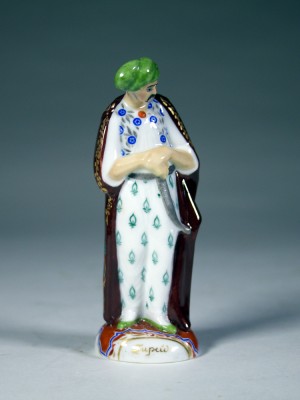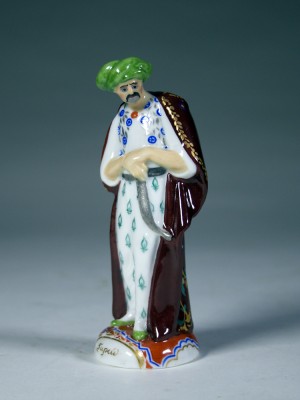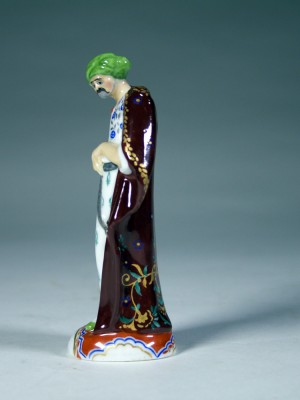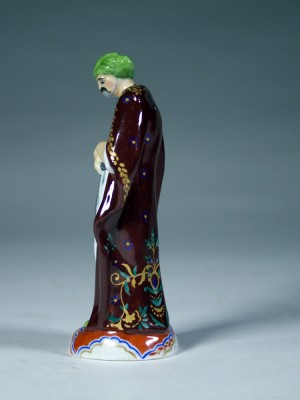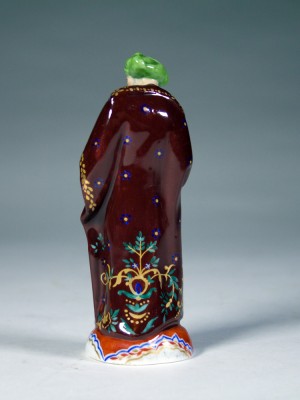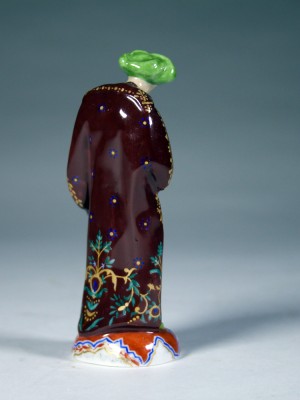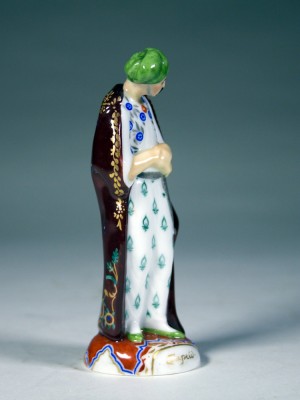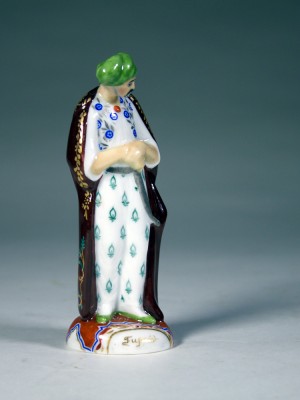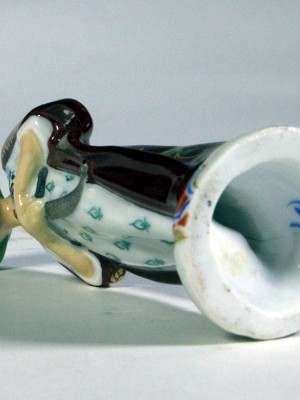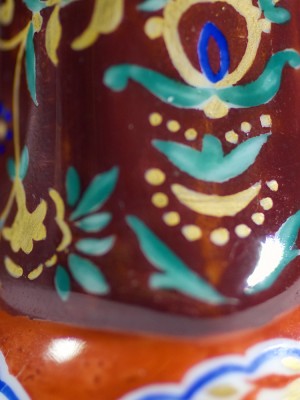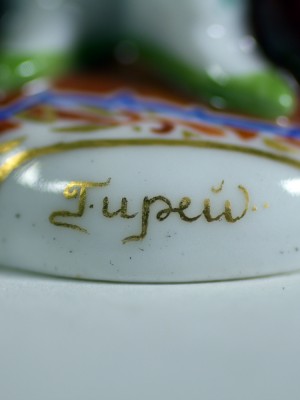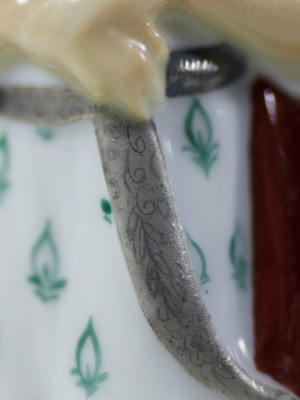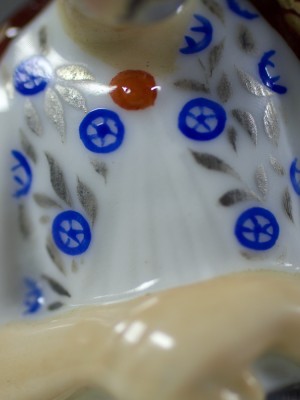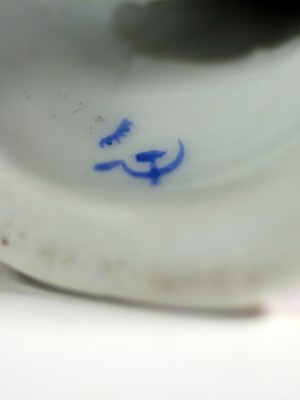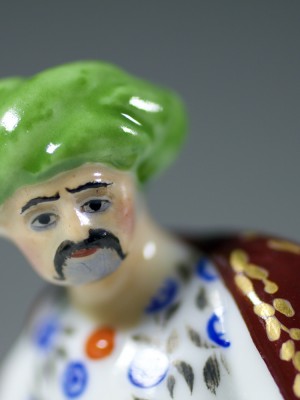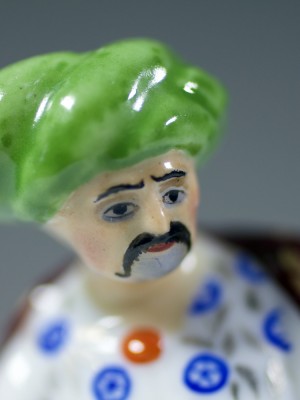The Russian Imperial Porcelain Factory survived the October Revolution of 1917 to become the State Porcelain Manufactory (Lomonosov). In the early years of the redefined factory, emphasis was given to porcelain as a propaganda tool. Revolutionary slogans and futurist themes were painted on Imperial Factory blanks. New figures were made to spread Soviet ideology. Natalia Danko, head of the factory’s sculpture division from 1919 to 1941, produced many propaganda figures in her tenure.
This rare example is one such figure designed by Natalia Danko in 1923. It is Sultan Girei from a set of three figures based on Pushkin’s poem “The Fountain of Bakhchisarai”. The story is said to express the belief in the superiority of Russian (Western) values over the brutality of Muslim culture. Not so different than attitudes today.
This figure is marked with a blue enamel hammer, sickle and cog. The mark dates this figure between 1923 and 1930. Copies continued to be made into the 1940s but this one is from the early years of the Soviet period.
Many of the propaganda porcelains were made for export. With its Turkish? inscription, this was certainly an export piece.
The dagger, belt and some of the detailing of the costume were black when the figure arrived. Close examination suggested there was more to it than that. With a little polishing the black disappeared.The sparkle of silver made this figure a lot more lively.
In an earlier post I referred to Natalia Danko as the first female head of the State Factory, not just the sculpture division as stated above. The former turns out to have been a mistake. When much of the written material is in a language you have no understanding of, it is easy to get details wrong. Apologies.
12.4 cm in height.
On the hunt for unrecognized copies of Maria and Zarema, the other two characters from Danko’s set.

